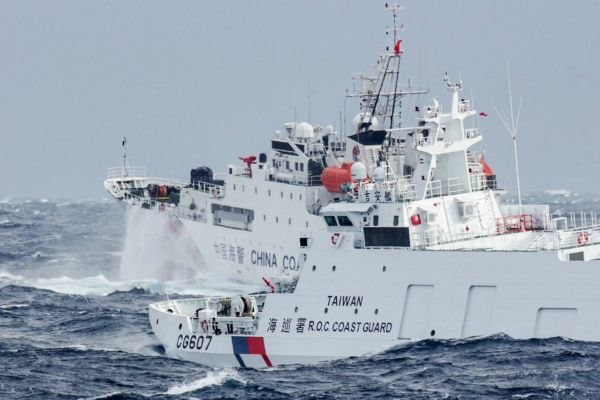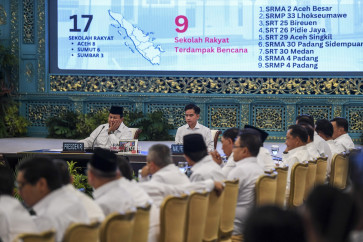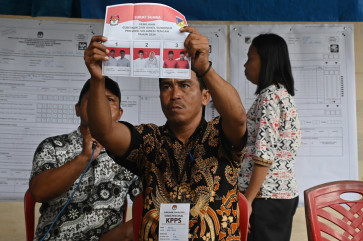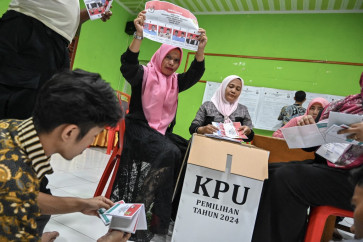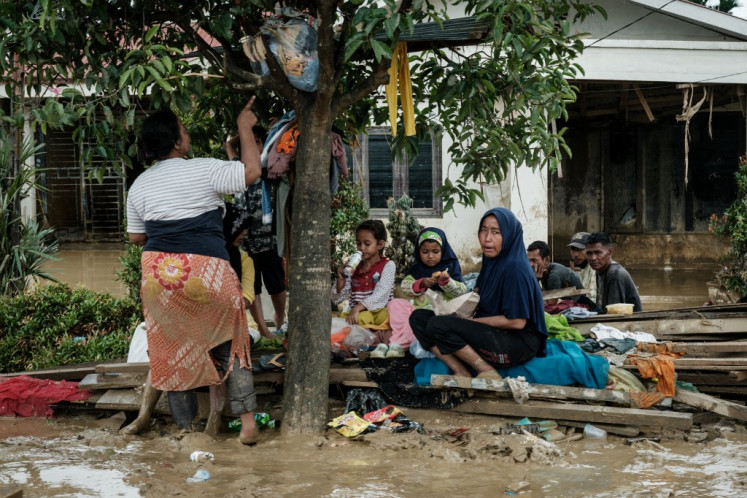Popular Reads
Top Results
Can't find what you're looking for?
View all search resultsPopular Reads
Top Results
Can't find what you're looking for?
View all search resultsPapering over strains, US and allies prep for Taiwan war
Already, 2025 has witnessed a series of the largest and most sophisticated military drills held in the Pacific since the end of World War II, a sign of growing worry over a rising China.
Change text size
Gift Premium Articles
to Anyone
A
s they kicked off the largest joint military exercises in Australia’s history with a press conference in Sydney last month, United States commanders gave a simple explanation for why 35,000 troops from 19 nations were simulating high-tech warfare.
In the words of US Lieutenant General Joel Vowell, deputy commander of the US Army in the Pacific, exercise TALISMAN SABRE was intended to build the ability of the US and its allies to respond to any crisis in the Pacific, and in doing so, act as a “deterrent mechanism” to prevent a future conflict.
Already, 2025 has witnessed a series of the largest and most sophisticated military drills held in the Pacific since the end of World War II, a sign of growing nervousness over a rising China. But along with other US-led activity around the region, the drills also have a much more focused goal.
They are meant to persuade Beijing that if it goes ahead with what are now believed to be increasingly advanced plans for an invasion of Taiwan, it risks finding itself at war not just with the US, but with a powerful and well-armed de facto alliance.
Behind the scenes, however, sits clear diplomatic awkwardness, caused both by Pacific frustrations over US President Donald Trump's tariff salvos and trade war as well as strategic uncertainty over the US and its future global role.
Unlike with its NATO allies in Europe or its main Pacific partners such as Australia, the US has no binding treaty obligations to defend Taiwan if it is attacked.
Nor do Australia, the Philippines and other major players in the region. The Financial Times reported that US officials were exerting mounting pressure on Australia and Japan to agree to intervene militarily if China moved against Taiwan.
That raised eyebrows in both nations, as well as an unusually public refusal to make any such commitment.
That should not have been surprising.
Under terms of the Taiwan Relations Act of 1979, successive US administrations have been committed to ensuring plans and military resources are in place to protect the island against whatever Chinese menace it faces.
But that does not extend to a commitment to use that force in the event of an attack. Indeed, there is a clear division of views within the Trump administration and its supporters on the wisdom of such action, as well as over how much support Washington should offer to the government in Taipei.
That means the US’ regional allies find themselves taking a similar position, frequently happy to work with the US on contingency planning and deepening military cooperation, but unwilling to commit much further.
The result is a situation rather different from what the Trump administration expected to find when it entered office in January complaining loudly about a European failure to invest properly in defending their own continent and pledging to switch the US’ focus to confronting China.
But while European NATO nations have now committed to significant spending increases, the US’ Pacific allies have held back.
Since Trump took office in January, however, the US’ Asian allies have found themselves profoundly uncertain by the administration’s cool treatment of Ukraine in the country's battle against Russian invasion.
They are suddenly worried that they might similarly find themselves deprived of US arms and forced toward a deal by a future US government. Trump’s tariffs and trade war rhetoric have only made such matters worse.
Now much more nervous that US support might one day fall away, Asian powers, especially Japan and Australia, but also a host of smaller nations have made clear they would like to lock in deeper links to Europe, including through defense purchases.
So far this year, both the United Kingdom and France have sent an aircraft carrier to the Pacific, while TALISMAN SABRE in Australia also included forces from Canada, the Netherlands, Germany and Norway.
Their presence will have come as a relief to many in Australia.
Earlier this year, Chinese warships conducted live firing exercises without warning in international waters off Australia before circumnavigating the country completely in a show of force, with Australian complaints that the US appeared to offer neither comment nor reaction.
TALISMAN SABRE has seen Australia showing off how it can help the US military with bases, weapons storage facilities and enormous training areas where long-range rockets and other weapons can be tested, while the US and partners engage in the kind of aggressive training that might be seen as escalatory if conducted closer to the Chinese coast.
That, of course, points to the debate within the US itself, including in the Pentagon, over whether Washington is making matters safer or more dangerous through its actions to counter China; something that will be examined in a major review posture already underway.
Those who think the US is already overstretched, the so-called “restrainers”, say it should look to pull back its forces nearest China’s mainland, including the 500-odd trainers, contractors and military personnel reported to be on Taiwan itself, warning that their presence fuels unintended escalation.
Any pullback could include personnel from South Korea and exposed areas of Japan including the island of Okinawa.
Critics of that approach say such a withdrawal might be seen as a green light from Beijing to launch its Taiwan invasion.
In June, as the US sent Pacific-based aircraft carriers and Patriot air defense systems to the Middle East, China’s two working aircraft carriers carried out their own high-profile training further into the Western Pacific than ever before, another sign of growing Chinese confidence.
For now, the Pentagon looks set to keep stepping up its activity in Asia unless directly ordered otherwise.
Whether that is enough to give those in power in Beijing second thoughts on launching an invasion of Taiwan, only time will tell, but the stakes look likely to keep on getting higher.
---
The writer is a columnist for Reuters. The views expressed are personal.

